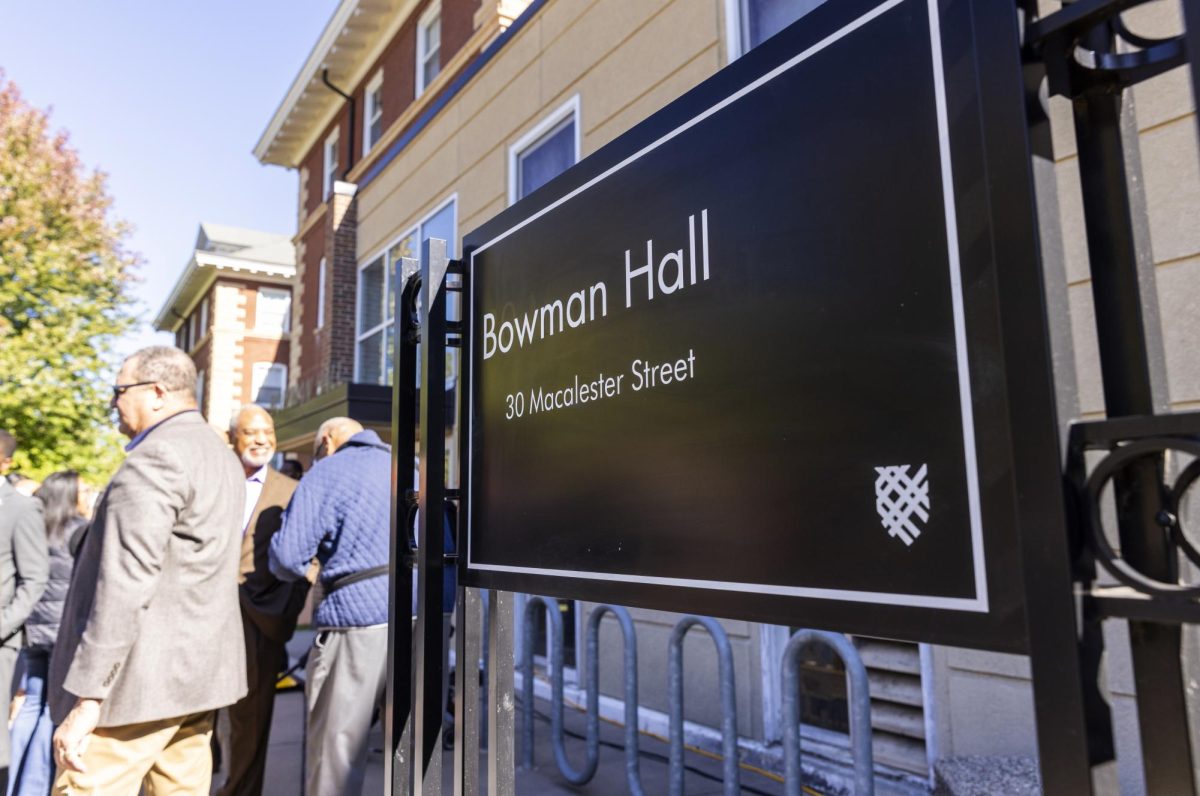
A lot of construction projects around campus are pretty noticeable. No one could miss the renovation of J-Wall, and when solar panels are added to Markim Hall later this year, it will be an obvious statement of Macalester’s dedication to sustainability.
Sometimes smaller construction projects occur around campus that have important consequences but are not quite as flashy or obvious. That’s what happened this summer when the college installed permeable pavement on the east side of Weyerhaeuser Hall. Permeable pavement is already found on the east side of J-Wall, where the patchwork design sets it apart from standard walkways. While a bit harder to identify than solar panels or wind turbines, these pavers are a sustainability measure and play a part in the college’s sustainable landscape commitment. So what is it about these pavers that make them environmentally friendly?
Cities are covered in impervious surfaces like sidewalks and roads. During significant rainfall, most of the water landing on these surfaces quickly flows into storm sewers and is sent on its way, in our case, to the Mississippi River. When much of an area is covered in impervious surfaces, as is the area around Macalester and the Twin Cities, huge quantities of water suddenly surge towards the Mississippi during rainstorms, raising the volume of water that goes racing downstream. Usually that doesn’t mean that anything disastrous will happen, unless the amount of rainfall is extremely large or lasts for several days. At that point, the surge of water making its way to the Mississippi can become so great that it can cause flooding downstream.
Pervious surfaces, on the other hand, allow precipitation to gradually make its way into the ground and to be absorbed by soils and plants. Pervious surfaces include areas covered by plants or grasses and areas that give water minimum trouble on its way to the ground. When rainwater lands on a permeable surface, instead of being whisked away, a good amount is able to soak into the soil, hydrating plants and slowing the speed of runoff. Much of the water does makes its way to the Mississippi eventually, but it first works through the soil, which takes time and allows for a slower release of water into the river, lessening the chance of a massive surge of water downstream and keeping the volume of the river steadier.
Think of it as a clump of dirt compared to a clump of hardened concrete. If you were to pour water on the concrete, you would end up with a big puddle almost instantaneously. Pouring water onto the clump of dirt might still result in a puddle, but the puddle would form more slowly and be smaller, as the soil would slow the water’s path and absorb some of it along the way.
Unlike traditional sidewalk, which is one large slab of concrete after another, permeable pavers have decently sized gaps between each individual paver. These gaps create spaces where rainwater can find its way to the soil below. The gaps also ensure that water can drain to the ground, rather than forming big sidewalk puddles. The spaces between the pavers are filled with tiny rocks to prevent the pavers from slipping around, but still leave plenty of space for water to trickle down.
While Macalester’s new permeable pavers are only one small piece in a large puzzle of runoff reduction in the area, they are a step in the right direction. The impact of their installation may not be huge, but at the scale of Macalester, it moves us further towards curbing huge volumes of runoff.






Jake Harris • Sep 10, 2019 at 6:14 pm
I am not sure where you’re getting your info, but good topic. I needs to spend some time learning more or understanding more. Thanks for wonderful information I was looking for this information for my mission.
Jacob Graham • Sep 6, 2019 at 7:19 am
This paragraph concerning SEO gives clear idea in favor of new SEO visitors that how to do Search engine optimization, thus keep it up. Pleasant work